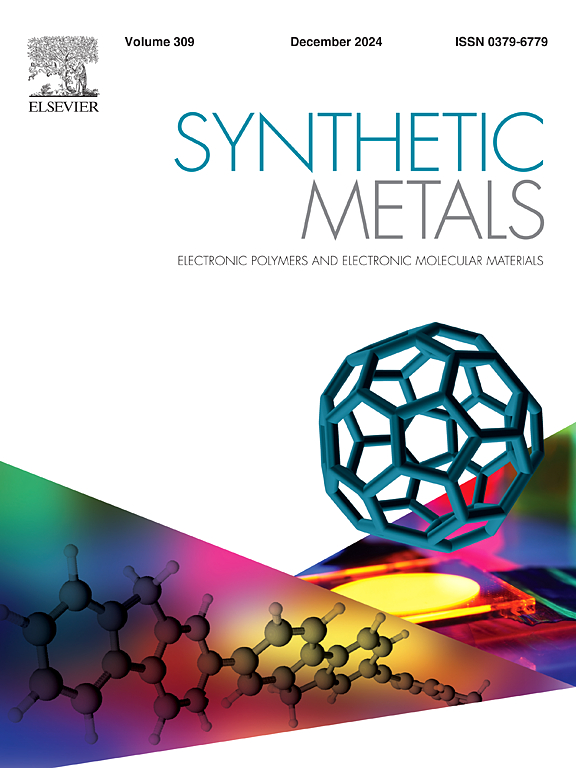Polyaniline-encapsulated carbon-coated nickel zinc ferrite: A hybrid composite for enhanced absorption-dominant EMI shielding
IF 4.6
3区 材料科学
Q2 MATERIALS SCIENCE, MULTIDISCIPLINARY
引用次数: 0
Abstract
The rapid growth of communication technologies necessitates the development of efficient electromagnetic interference (EMI) shielding materials. This work investigates an unconventional and innovative conducting polymer-based composite (CPC) material for EMI shielding, comprising of carbon coated nickel zinc ferrite (C@NZF) and polyaniline (PANI). The CPC is synthesized sequentially by a sol-gel, hydrothermal, and in-situ polymerization process. The ratio of C@NZF:ANI is kept 1:9, resulting in a lightweight composite with a facile synthesis process. Morphology and phase identification of PANI-C@NZF is analyzed using SEM and XRD analysis. FTIR is performed for functional group identification of the composite. Notably, the composite demonstrates an absorption dominant EMI shielding effectiveness (SE) of 27 dB in X-band, translating to 99.8 % signal attenuation. The average absorption coefficient (A) in the complete frequency range (8.2–12.4 GHz) is found to be 0.63. The high absorption is attributed to the combined effects of dielectric and magnetic properties of PANI and C@NZF. Moreover, the encapsulation of C@NZF by PANI provides multiple interfaces which results in electromagnetic signal attenuation by interfacial polarization. These findings suggest that the PANI-C@NZF composite possesses promising potential as an absorption-based EMI shielding material for applications in EM pollution reduction, telecommunication and defense.
聚苯胺包封碳包覆镍锌铁氧体:一种增强吸收主导型电磁干扰屏蔽的杂化复合材料
通信技术的快速发展要求开发高效的电磁干扰屏蔽材料。这项工作研究了一种用于电磁干扰屏蔽的非常规和创新的导电聚合物基复合材料(CPC),该材料由碳涂层镍锌铁氧体(C@NZF)和聚苯胺(PANI)组成。CPC是通过溶胶-凝胶、水热和原位聚合工艺依次合成的。C@NZF:ANI的比例保持在1:9,从而产生了一种轻质复合材料,合成过程简单。利用SEM和XRD分析了PANI-C@NZF的形貌和物相特征。FTIR对复合材料的官能团进行鉴定。值得注意的是,该复合材料在x波段具有27 dB的吸收优势EMI屏蔽效率(SE),转化为99.8% %的信号衰减。整个频率范围(8.2 ~ 12.4 GHz)的平均吸收系数A为0.63。高吸收率是聚苯胺和C@NZF的介电和磁性共同作用的结果。此外,聚苯胺对C@NZF的封装提供了多个接口,导致电磁信号被接口极化衰减。这些发现表明,PANI-C@NZF复合材料作为一种基于吸收的电磁干扰屏蔽材料,在减少电磁污染、电信和国防方面具有很大的应用潜力。
本文章由计算机程序翻译,如有差异,请以英文原文为准。
求助全文
约1分钟内获得全文
求助全文
来源期刊

Synthetic Metals
工程技术-材料科学:综合
CiteScore
8.30
自引率
4.50%
发文量
189
审稿时长
33 days
期刊介绍:
This journal is an international medium for the rapid publication of original research papers, short communications and subject reviews dealing with research on and applications of electronic polymers and electronic molecular materials including novel carbon architectures. These functional materials have the properties of metals, semiconductors or magnets and are distinguishable from elemental and alloy/binary metals, semiconductors and magnets.
 求助内容:
求助内容: 应助结果提醒方式:
应助结果提醒方式:


